 Search by Keyword
|
“SGT. PEPPER’S LONELY HEARTS CLUB BAND”
(John Lennon – Paul McCartney)
 The compositions of Lennon and McCartney had been expanding greatly in lyrical content and style, this being was especially discernible in their output after 1966 and beyond. Jumping from the primary romantic scenario to any subject they well pleased, they now realized that they could use the medium of songwriting as a free artistic expression. They could write about lonely spinsters, paperback authors, psychedelic experiences, drug dealers, and even submarines if they wanted to. As to musical styles, they also seemed to touch base with any genre they desired to tackle – straight-ahead rock, ballads, children’s songs, classical, Indian, and even rhythm-and-blues. The compositions of Lennon and McCartney had been expanding greatly in lyrical content and style, this being was especially discernible in their output after 1966 and beyond. Jumping from the primary romantic scenario to any subject they well pleased, they now realized that they could use the medium of songwriting as a free artistic expression. They could write about lonely spinsters, paperback authors, psychedelic experiences, drug dealers, and even submarines if they wanted to. As to musical styles, they also seemed to touch base with any genre they desired to tackle – straight-ahead rock, ballads, children’s songs, classical, Indian, and even rhythm-and-blues.
 Therefore, taking their new “the sky’s the limit” approach, this songwriting team tried their hand at composing a theme song for a new fictional concept of their own making. As if introducing a musical, they set the stage for introducing a fictitious historical figure and his brief story. Quickly bringing it up to modern day, the lead singer introduces the key figures of this stage play while, in the process, also cleverly combining two seemingly diametrically opposed musical genres – hard rock and brass band! Therefore, taking their new “the sky’s the limit” approach, this songwriting team tried their hand at composing a theme song for a new fictional concept of their own making. As if introducing a musical, they set the stage for introducing a fictitious historical figure and his brief story. Quickly bringing it up to modern day, the lead singer introduces the key figures of this stage play while, in the process, also cleverly combining two seemingly diametrically opposed musical genres – hard rock and brass band!
 Combining the startling and elaborate imagery gracing the cover of this new album with the first song acting as a supposed intro to an unexpected “concept,” Beatles' fans worldwide couldn’t help but have their curiosity piqued. This wasn’t just the latest Beatles album. Right from the first two minutes of listening to the album on their record players, they realized they were in for a real treat. Such was the effect of the brilliantly delivered opening title track to their 1967 album masterpiece “Sgt. Pepper’s Lonely Hearts Club Band.” Combining the startling and elaborate imagery gracing the cover of this new album with the first song acting as a supposed intro to an unexpected “concept,” Beatles' fans worldwide couldn’t help but have their curiosity piqued. This wasn’t just the latest Beatles album. Right from the first two minutes of listening to the album on their record players, they realized they were in for a real treat. Such was the effect of the brilliantly delivered opening title track to their 1967 album masterpiece “Sgt. Pepper’s Lonely Hearts Club Band.”
Songwriting History
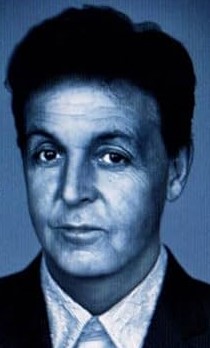 “The first thing I remember was flying back from America with our road manager Mal Evans,” remembers Paul McCartney on March, 6th, 2008 as related in the liner notes to the remastered release of “Sgt. Pepper.” "Over our meal we were talking about salt and pepper which was misheard as Sgt. Pepper. I then had the idea for the song ‘Sgt. Pepper’s Lonely Hearts Club Band’ and thought it would be interesting for us to pretend, during the making of the album, that we were members of this band rather than Beatles, in order to give us a fresh slant." “The first thing I remember was flying back from America with our road manager Mal Evans,” remembers Paul McCartney on March, 6th, 2008 as related in the liner notes to the remastered release of “Sgt. Pepper.” "Over our meal we were talking about salt and pepper which was misheard as Sgt. Pepper. I then had the idea for the song ‘Sgt. Pepper’s Lonely Hearts Club Band’ and thought it would be interesting for us to pretend, during the making of the album, that we were members of this band rather than Beatles, in order to give us a fresh slant."
 As documented in Kenneth Womack's book "Living The Beatles Legend," Paul related, "I got this idea. I thought, 'Let's not be ourselves. Let's develop alter-egos so we're not having to project an image which we know. It would be much more free." Kenneth Womack adds: "after all, he had enjoyed the relative freedom that traveling incognito over the past few months had afforded him. With that, he turned to Mal (Evans), with whom he 'often bantered words about,' and asked him to 'think or names' for the Beatles' new alter egos." In his book "Many Years From Now," Paul elaborates: "We were having our meal, and they had those little packets marked 'S' and 'P,' and Mal (Evans) said, 'What's that mean? Oh, salt and pepper.' We had a joke about that. So I said, 'Sergeant Pepper,' just to vary it, 'Sergeant Pepper, salt and pepper' - an aural pun, not mishearing him, but just playing with the words...I just strung those together rather in the way that you might string together 'Dr. Hook and The Medicine Show.” As documented in Kenneth Womack's book "Living The Beatles Legend," Paul related, "I got this idea. I thought, 'Let's not be ourselves. Let's develop alter-egos so we're not having to project an image which we know. It would be much more free." Kenneth Womack adds: "after all, he had enjoyed the relative freedom that traveling incognito over the past few months had afforded him. With that, he turned to Mal (Evans), with whom he 'often bantered words about,' and asked him to 'think or names' for the Beatles' new alter egos." In his book "Many Years From Now," Paul elaborates: "We were having our meal, and they had those little packets marked 'S' and 'P,' and Mal (Evans) said, 'What's that mean? Oh, salt and pepper.' We had a joke about that. So I said, 'Sergeant Pepper,' just to vary it, 'Sergeant Pepper, salt and pepper' - an aural pun, not mishearing him, but just playing with the words...I just strung those together rather in the way that you might string together 'Dr. Hook and The Medicine Show.”
 The flight McCartney mentioned above actually took place on November 19th, 1966 and was the trip back to London from Nairobi, Kenya after an African vacation with Mal Evans. Paul recounts his "Sgt Pepper" idea in his book "The Lyrics" as taking place on his return trip from Denver / Los Angeles to see Jane Asher perform in the play "Romeo And Juliet," but because this flight took place on April 11th, 1967 after the "Sgt Pepper" song was recorded to completion, this obviously was inaccurate. The April 11th, 1967 flight with Mal Evans resulted in Paul's idea for "Magical Mystery Tour," this understandably resulting in his confusing these two events. Paul apparently had great ideas while traveling by plane! The flight McCartney mentioned above actually took place on November 19th, 1966 and was the trip back to London from Nairobi, Kenya after an African vacation with Mal Evans. Paul recounts his "Sgt Pepper" idea in his book "The Lyrics" as taking place on his return trip from Denver / Los Angeles to see Jane Asher perform in the play "Romeo And Juliet," but because this flight took place on April 11th, 1967 after the "Sgt Pepper" song was recorded to completion, this obviously was inaccurate. The April 11th, 1967 flight with Mal Evans resulted in Paul's idea for "Magical Mystery Tour," this understandably resulting in his confusing these two events. Paul apparently had great ideas while traveling by plane!
 “I was just thinking of words like ‘Sgt. Pepper’ and lonely hearts clubs, and they came together for no reason,” McCartney related at the time, adding: "That’d be crazy enough because why would a Lonely Hearts Club have a band?...but after you’ve written it down, you start to think, ‘There’s this Sergeant Pepper who has taught the band to play, and got them to play,’ so that, at least, they found one number. They’re a bit of a brass band in a way, but also a bit of a rock band because they’ve got the San Francisco thing." “I was just thinking of words like ‘Sgt. Pepper’ and lonely hearts clubs, and they came together for no reason,” McCartney related at the time, adding: "That’d be crazy enough because why would a Lonely Hearts Club have a band?...but after you’ve written it down, you start to think, ‘There’s this Sergeant Pepper who has taught the band to play, and got them to play,’ so that, at least, they found one number. They’re a bit of a brass band in a way, but also a bit of a rock band because they’ve got the San Francisco thing."
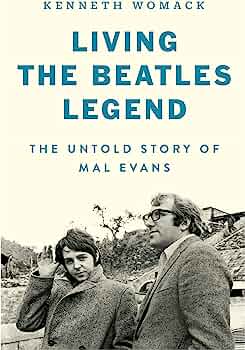 Kenneth Womack, in his book "Living The Beatles Legend: The Untold Story Of Mal Evans," relates: "In Mal's recollection, they had first settled on 'Doctor Pepper's Lonely Hearts Club Band' as the name of the fictitious group, only to realize that 'Dr. Pepper' was already a registered trademark. This necessitated additionaly brainstorming, which produced 'Captain Pepper' before the duo finally arrived at 'Sgt. Pepper's Lonely Hearts Club Band.'" " Kenneth Womack, in his book "Living The Beatles Legend: The Untold Story Of Mal Evans," relates: "In Mal's recollection, they had first settled on 'Doctor Pepper's Lonely Hearts Club Band' as the name of the fictitious group, only to realize that 'Dr. Pepper' was already a registered trademark. This necessitated additionaly brainstorming, which produced 'Captain Pepper' before the duo finally arrived at 'Sgt. Pepper's Lonely Hearts Club Band.'" "
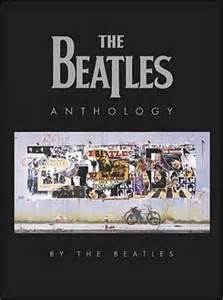 As explained in the 2000 “Anthology” book, Paul remembers: "I took an idea back to the guys in London: ‘As we’re trying to get away from ourselves, to get away from touring and into a more surreal thing, how about if we all become an alter-ego band, something like, say, “Sgt. Pepper’s Lonely Hearts”? I got a little bit of a song cooking with that title.’" As explained in the 2000 “Anthology” book, Paul remembers: "I took an idea back to the guys in London: ‘As we’re trying to get away from ourselves, to get away from touring and into a more surreal thing, how about if we all become an alter-ego band, something like, say, “Sgt. Pepper’s Lonely Hearts”? I got a little bit of a song cooking with that title.’"
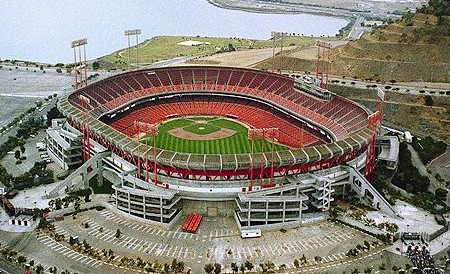 In his 2021 book "The Lyrics," Paul remembers: "We had recently played Candlestick Park (in San Francisco). That was a show where we couldn't even hear ourselves; it was raining, we were nearly electrocuted and when we got off stage we were chucked into the back of a stainless steel minitruck. The minitrruck was empty, and we were sliding round in it, and we all thought, 'F*ck, that's enough.' That day we deciced we wouldn't tour again. The idea was that we would make records, and the records would tour. We'd once heard that Elvis Presley had sent his gold-plated Cadillac on tour, and we thought that was just brilliant. So we thought, 'We'll make a record, and that'll be our gold-plated Cadillac.'" In his 2021 book "The Lyrics," Paul remembers: "We had recently played Candlestick Park (in San Francisco). That was a show where we couldn't even hear ourselves; it was raining, we were nearly electrocuted and when we got off stage we were chucked into the back of a stainless steel minitruck. The minitrruck was empty, and we were sliding round in it, and we all thought, 'F*ck, that's enough.' That day we deciced we wouldn't tour again. The idea was that we would make records, and the records would tour. We'd once heard that Elvis Presley had sent his gold-plated Cadillac on tour, and we thought that was just brilliant. So we thought, 'We'll make a record, and that'll be our gold-plated Cadillac.'"
 "I must admit I'd taken some acid," adds Paul in his 2021 book "The Lyrics." "This was all a kind of game I was playing after that trip. I had drawn the sketch to show the guys what this new project might be like...I did a sketch in which the four of us were pictured in front of a floral clock. It was as if time stood still, because the clock was made of flowers. There was something lovely about that. The idea was that the band were going to be presented with a trophy by the Lord Mayor of London, or someone like that. So, we agreed on the cover idea, then went down to the constumier Monty Berman, in Soho, to be fitted with the band's outfits...They loved it. And it really freed us up. It gave us a kind of anonymity and a new lease on life." With all of the fiascos of their 1966 live performances, including the outlash occuring from John's "more popular than Jesus" statement and their mistreatment in Manila, John, George and Ringo were easily convinced! "I must admit I'd taken some acid," adds Paul in his 2021 book "The Lyrics." "This was all a kind of game I was playing after that trip. I had drawn the sketch to show the guys what this new project might be like...I did a sketch in which the four of us were pictured in front of a floral clock. It was as if time stood still, because the clock was made of flowers. There was something lovely about that. The idea was that the band were going to be presented with a trophy by the Lord Mayor of London, or someone like that. So, we agreed on the cover idea, then went down to the constumier Monty Berman, in Soho, to be fitted with the band's outfits...They loved it. And it really freed us up. It gave us a kind of anonymity and a new lease on life." With all of the fiascos of their 1966 live performances, including the outlash occuring from John's "more popular than Jesus" statement and their mistreatment in Manila, John, George and Ringo were easily convinced!
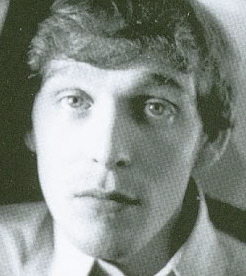 However, McCartney apparently desired a little help in bringing the song to completion. “I used to share a flat in Sloane Street with Mal (Evans),” explains Beatles' roadie Neil Aspinall. "One day in February (1967) Paul called, saying that he was writing a song and asking if me and Mal could come over. The song was the start of ‘Sgt. Pepper.’ At my place he carried on writing and the song developed." With Lennon being preoccupied with LSD at this time, Paul apparently decided to forego his partnership with Lennon to reach out to other associates he respected for songwriting collaboration, George not being among them. However, McCartney apparently desired a little help in bringing the song to completion. “I used to share a flat in Sloane Street with Mal (Evans),” explains Beatles' roadie Neil Aspinall. "One day in February (1967) Paul called, saying that he was writing a song and asking if me and Mal could come over. The song was the start of ‘Sgt. Pepper.’ At my place he carried on writing and the song developed." With Lennon being preoccupied with LSD at this time, Paul apparently decided to forego his partnership with Lennon to reach out to other associates he respected for songwriting collaboration, George not being among them.
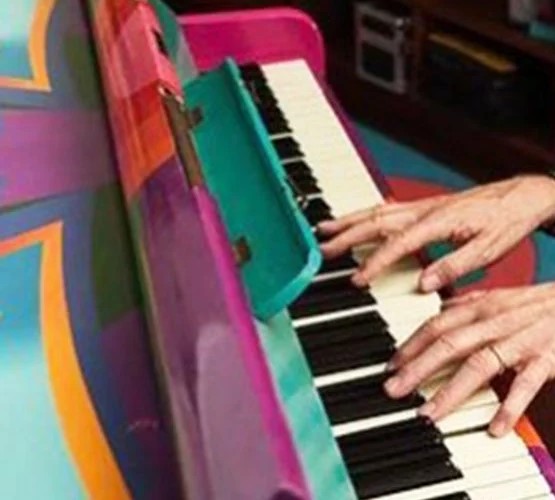 Mal Evans, in his diary from that time, refers to this day, which is in actuality an entry for January 27th, 1967. His diary reads: “Sgt. Pepper. Started writing song with Paul upstairs in his room, he on piano.” Mal Evans' entry for February 1st, 1967, which happened to be the first recording date for this song, stated: “Sgt. Pepper sounds good. Paul tells me that I will get royalties on the song, great news, now perhaps a new home.” Mal Evans, in his diary from that time, refers to this day, which is in actuality an entry for January 27th, 1967. His diary reads: “Sgt. Pepper. Started writing song with Paul upstairs in his room, he on piano.” Mal Evans' entry for February 1st, 1967, which happened to be the first recording date for this song, stated: “Sgt. Pepper sounds good. Paul tells me that I will get royalties on the song, great news, now perhaps a new home.”
 The Keith Badman book “The Beatles Off The Record” contains this very interesting quote from Mal Evans taken from a taped interview shortly before his death on January 5th, 1976. "The first song I ever wrote that got published was ‘Sgt. Pepper.’ At the time, I was staying with Paul as his housekeeper. His previous housekeepers had left for some reason. I stayed with him for four months and he had a music room at the top of his house with his multi-colored piano and we were up there a lot of the time. We wrote ‘Sgt. Pepper’ and also another song on the album, ‘Fixing A Hole.’" Regarding the song "Sgt. Pepper," Mal Evans described their collaboration on January 27th, 1967 as "the brainchild of two people keeping each other company at a painted piano," referring to Paul's "magic piano" that was "a very gaily decorated piano" that was painted by Simon Posthuma and Marijke Koger, known collectively as "The Fool." The Keith Badman book “The Beatles Off The Record” contains this very interesting quote from Mal Evans taken from a taped interview shortly before his death on January 5th, 1976. "The first song I ever wrote that got published was ‘Sgt. Pepper.’ At the time, I was staying with Paul as his housekeeper. His previous housekeepers had left for some reason. I stayed with him for four months and he had a music room at the top of his house with his multi-colored piano and we were up there a lot of the time. We wrote ‘Sgt. Pepper’ and also another song on the album, ‘Fixing A Hole.’" Regarding the song "Sgt. Pepper," Mal Evans described their collaboration on January 27th, 1967 as "the brainchild of two people keeping each other company at a painted piano," referring to Paul's "magic piano" that was "a very gaily decorated piano" that was painted by Simon Posthuma and Marijke Koger, known collectively as "The Fool."
 “When the album came out,” Mal Evans added, “I remember it very clearly, we were driving somewhere late at night. There was Paul, Neil Aspinall and myself and the driver in the car, and Paul turned round to me and said, ‘Look Mal, do you mind if we don’t put your name on the songs? You’ll get your royalties and all that, because Lennon and McCartney are the biggest things in our lives. We are really a hot item and we don’t want to make it Lennon-McCartney-Evans. So, would you mind?’ I didn’t mind, because I was so in love with the group that it didn’t matter to me. I knew myself what had happened.” “When the album came out,” Mal Evans added, “I remember it very clearly, we were driving somewhere late at night. There was Paul, Neil Aspinall and myself and the driver in the car, and Paul turned round to me and said, ‘Look Mal, do you mind if we don’t put your name on the songs? You’ll get your royalties and all that, because Lennon and McCartney are the biggest things in our lives. We are really a hot item and we don’t want to make it Lennon-McCartney-Evans. So, would you mind?’ I didn’t mind, because I was so in love with the group that it didn’t matter to me. I knew myself what had happened.”
 No doubt with his collaboration with Mal Evans in mind, Paul related how another aspect of the lyrics came to fruition: “Billy Shears is another name that sounds like a schoolmate, but isn’t. Ringo is Billy Shears. It just happened to turn out that we just dreamed up Billy Shears. It was a rhyme for ‘years,’ the ’band you’ve known for all these years’…We thought, ‘That’s a great little name.’ It’s an Eleanor Rigby type name. A nice atmospheric name and it was leading into Ringo’s track. So, as far as we were concerned, it was purely and simply a devise to get the next song in.” No doubt with his collaboration with Mal Evans in mind, Paul related how another aspect of the lyrics came to fruition: “Billy Shears is another name that sounds like a schoolmate, but isn’t. Ringo is Billy Shears. It just happened to turn out that we just dreamed up Billy Shears. It was a rhyme for ‘years,’ the ’band you’ve known for all these years’…We thought, ‘That’s a great little name.’ It’s an Eleanor Rigby type name. A nice atmospheric name and it was leading into Ringo’s track. So, as far as we were concerned, it was purely and simply a devise to get the next song in.”
 The obvious question to be asked, however, is whether Lennon was involved at all in the writing of the song. “Paul wrote it after a trip to America,” was Lennon’s answer as printed in the January 1981 issue of Playboy Magazine. So, starting off with the initial idea on the Nairobi / London flight of November 19th, 1966, the bulk of the song appears to have been written at Paul’s house in St. John’s Wood on January 27th, 1967 and completed by the end of the month, presumably at Neil Aspinall’s residence on Sloane Street in London. The obvious question to be asked, however, is whether Lennon was involved at all in the writing of the song. “Paul wrote it after a trip to America,” was Lennon’s answer as printed in the January 1981 issue of Playboy Magazine. So, starting off with the initial idea on the Nairobi / London flight of November 19th, 1966, the bulk of the song appears to have been written at Paul’s house in St. John’s Wood on January 27th, 1967 and completed by the end of the month, presumably at Neil Aspinall’s residence on Sloane Street in London.
Recording History
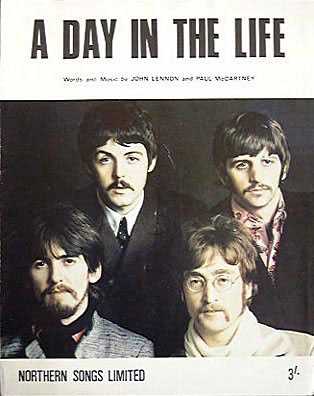 On February 1st, 1967, about nine weeks into their current recording project, The Beatles entered EMI Studio Two at 7 pm to start recording their fifth composition designated for the new album (not including 1966 Christmas recordings and the unreleased “Carnival Of Light” experiment). This entire seven-and-a-half hour recording session was devoted to the recently completed proposed theme of the album, namely, “Sgt. Pepper’s Lonely Hearts Club Band.” Two sessions had already been devoted to their song “A Day In The Life” at this point, but they decided to let it rest for a while in order to allow new ideas for that track to germinate. On February 1st, 1967, about nine weeks into their current recording project, The Beatles entered EMI Studio Two at 7 pm to start recording their fifth composition designated for the new album (not including 1966 Christmas recordings and the unreleased “Carnival Of Light” experiment). This entire seven-and-a-half hour recording session was devoted to the recently completed proposed theme of the album, namely, “Sgt. Pepper’s Lonely Hearts Club Band.” Two sessions had already been devoted to their song “A Day In The Life” at this point, but they decided to let it rest for a while in order to allow new ideas for that track to germinate.
 Engineer Geoff Emerick, in his book “Here, There And Everywhere,” remembers the session on this day vividly. "'Sgt. Pepper’s Lonely Hearts Club Band' had quite a different feel to all the other laid-back songs we’d done so far – this one was a real rocker, more like the kind of cover songs the band did in their live set earlier in their career." In Keith Badman's 2001 book "The Beatles Off The Record," Ringo states: "'Pepper' became a theme, I would say, right at the beginning. We may have been a week into the album before we decided, 'Let's get into that.' Paul wrote a wong with Mal Evans called 'Sgt. Pepper.' I think Mal (Evans) thought of the title. Big Mal, super roadie!" Engineer Geoff Emerick, in his book “Here, There And Everywhere,” remembers the session on this day vividly. "'Sgt. Pepper’s Lonely Hearts Club Band' had quite a different feel to all the other laid-back songs we’d done so far – this one was a real rocker, more like the kind of cover songs the band did in their live set earlier in their career." In Keith Badman's 2001 book "The Beatles Off The Record," Ringo states: "'Pepper' became a theme, I would say, right at the beginning. We may have been a week into the album before we decided, 'Let's get into that.' Paul wrote a wong with Mal Evans called 'Sgt. Pepper.' I think Mal (Evans) thought of the title. Big Mal, super roadie!"
 “There was another surprise,” Geoff Emerick continues. “Paul wanted to play rhythm guitar on the backing track instead of bass, the first time I’d known him to do that. He simply told John, ‘Let me do the rhythm on this; I know exactly what I want.’ John accepted Paul’s instruction without a word of protest and simply picked up a bass guitar. He didn’t have any feel for the instrument, though, so we decided to record him on a separate track, using a DI box instead of a bass amp – this way, his guide bass part could be replaced later by Paul, without any problem of bleed or leakage onto any of the microphones.” “There was another surprise,” Geoff Emerick continues. “Paul wanted to play rhythm guitar on the backing track instead of bass, the first time I’d known him to do that. He simply told John, ‘Let me do the rhythm on this; I know exactly what I want.’ John accepted Paul’s instruction without a word of protest and simply picked up a bass guitar. He didn’t have any feel for the instrument, though, so we decided to record him on a separate track, using a DI box instead of a bass amp – this way, his guide bass part could be replaced later by Paul, without any problem of bleed or leakage onto any of the microphones.”
 EMI staff technician Ken Townsend explains further: “I think direct injection (DI) was probably used on Beatles sessions for the first time anywhere in the world...We built our own transformer boxes and plugged the guitars straight into the equipment.” Geoff Emerick continues: “After we explained the function of the DI box, (John) told (producer) George Martin that he’d like to have his voice recorded that way, too. Tongue planted firmly in cheek, George explained why we couldn’t do that: ‘For one thing, John, you’d have to have an operation first so we could implant a jack socket in your throat.’ Even then, Lennon couldn’t quite grasp why it wasn’t possible. He simply didn’t like taking no for an answer.” EMI staff technician Ken Townsend explains further: “I think direct injection (DI) was probably used on Beatles sessions for the first time anywhere in the world...We built our own transformer boxes and plugged the guitars straight into the equipment.” Geoff Emerick continues: “After we explained the function of the DI box, (John) told (producer) George Martin that he’d like to have his voice recorded that way, too. Tongue planted firmly in cheek, George explained why we couldn’t do that: ‘For one thing, John, you’d have to have an operation first so we could implant a jack socket in your throat.’ Even then, Lennon couldn’t quite grasp why it wasn’t possible. He simply didn’t like taking no for an answer.”
 Nine takes of the rhythm track were recorded on this day, only the first and the last attempt making it through to the conclusion of the song. Instrumentally, the rhythm track consisted of both Paul and George on electric rhythm guitars, Ringo on drums and John on bass, no vocals being recorded as of yet. Only two tracks of the four-track tape were utilized for this recording; track one having the guitars and drums and track two having John’s bass guitar, purposely kept separate so as to be replaced later by Paul’s bass work. Track one of the instrumental "take one" can be heard on the 2017 released "Super Deluxe Edition" box set of the "Sgt. Pepper" album which shows how heavy the song was envisioned by Paul. George's lead guitar, however, was somewhat sloppy and meandering at this point while John's bass guitar is not heard because of the use of the above-mentioned DI box in placing the bass onto track two. "Take nine," which became the keeper, was overdubbed this evening with Paul's bass guitar, also by direct injection, onto track two, wiping out John's bass work in the process. By 2:30 am the following day, the session was complete. Nine takes of the rhythm track were recorded on this day, only the first and the last attempt making it through to the conclusion of the song. Instrumentally, the rhythm track consisted of both Paul and George on electric rhythm guitars, Ringo on drums and John on bass, no vocals being recorded as of yet. Only two tracks of the four-track tape were utilized for this recording; track one having the guitars and drums and track two having John’s bass guitar, purposely kept separate so as to be replaced later by Paul’s bass work. Track one of the instrumental "take one" can be heard on the 2017 released "Super Deluxe Edition" box set of the "Sgt. Pepper" album which shows how heavy the song was envisioned by Paul. George's lead guitar, however, was somewhat sloppy and meandering at this point while John's bass guitar is not heard because of the use of the above-mentioned DI box in placing the bass onto track two. "Take nine," which became the keeper, was overdubbed this evening with Paul's bass guitar, also by direct injection, onto track two, wiping out John's bass work in the process. By 2:30 am the following day, the session was complete.
 Later that evening, at 7 pm on February 2nd, the group reconvened at EMI Studio Two to overdub vocals onto tracks three and four of the previous session's "take nine." Paul sang his blistering lead vocals and then John, Paul and George harmonized on the chorus and bridge. Three additional vocalists apparently joined in on the chorus, as noted in the diary of Mal Evans. In his February 2nd, 1967 entry, Mal Evans wrote: “Recording voices on 'Captain Pepper' (as it was initially known). All six of us doing the chorus in the middle, worked until about midnight.” His reference “all six of us” seems to indicate that Mal Evans, fellow roadie Neil Aspinall and Ringo all contributed to the “hope you will enjoy the show” vocals of the chorus late that evening. Apparently, however, they were placed quite low in the mix as to be barely discernible if at all present. Later that evening, at 7 pm on February 2nd, the group reconvened at EMI Studio Two to overdub vocals onto tracks three and four of the previous session's "take nine." Paul sang his blistering lead vocals and then John, Paul and George harmonized on the chorus and bridge. Three additional vocalists apparently joined in on the chorus, as noted in the diary of Mal Evans. In his February 2nd, 1967 entry, Mal Evans wrote: “Recording voices on 'Captain Pepper' (as it was initially known). All six of us doing the chorus in the middle, worked until about midnight.” His reference “all six of us” seems to indicate that Mal Evans, fellow roadie Neil Aspinall and Ringo all contributed to the “hope you will enjoy the show” vocals of the chorus late that evening. Apparently, however, they were placed quite low in the mix as to be barely discernible if at all present.
 With this complete, the EMI staff made a tape-to-tape reduction mix to reduce the four tracks down to two, allowing more space for future overdubs, this making “take ten” the keeper. The song as it stood at this point can also be heard as a bonus track on editions of the 50th Anniversary "Sgt. Pepper" 2017 release. As the song winds down, Paul begins singing "I feel it, I feel it...Baby, now I get it...Gotta get free now..." Then, after the song is complete, he voices his disapproval by saying, "Don't like that. I think it'll probably be another day singing it." George then adds, "Yeah, and what you can do with the bits where you can't get it 'cause you haven't got enough breath, you can just stop...," to which Paul replys, "is take over, yeah." With this complete, the EMI staff made a tape-to-tape reduction mix to reduce the four tracks down to two, allowing more space for future overdubs, this making “take ten” the keeper. The song as it stood at this point can also be heard as a bonus track on editions of the 50th Anniversary "Sgt. Pepper" 2017 release. As the song winds down, Paul begins singing "I feel it, I feel it...Baby, now I get it...Gotta get free now..." Then, after the song is complete, he voices his disapproval by saying, "Don't like that. I think it'll probably be another day singing it." George then adds, "Yeah, and what you can do with the bits where you can't get it 'cause you haven't got enough breath, you can just stop...," to which Paul replys, "is take over, yeah."
 McCartney obviously had a change of heart about re-recording the vocals because this was the vocal take that made it onto the finished product. A demo remix was then created for the group to hear the song as it presently stood. At 1:45 am the following morning, work on the song was complete for the time being. More time was needed in order to come up with additional ideas for the recording – one full month, as it turned out. McCartney obviously had a change of heart about re-recording the vocals because this was the vocal take that made it onto the finished product. A demo remix was then created for the group to hear the song as it presently stood. At 1:45 am the following morning, work on the song was complete for the time being. More time was needed in order to come up with additional ideas for the recording – one full month, as it turned out.
 On March 3rd, 1967, after six additional new songs were premiered for the album, the group returned their attention to the “Sgt. Pepper” theme song. They entered EMI Studio Two again at 7 pm for the brass band overdub, the players consisting of James W. Buck, Neil Sanders, Tony Randall and John Burden (a former London Symphony Orchestra member). All four of these musicians played French horns but without a definite score pre-determined. John Burden recalls: “They didn’t really know what they wanted. I wrote out phrases for them based on what Paul McCartney was humming to us and George Martin. All four Beatles were there but only Paul took an active interest in our overdub.” On March 3rd, 1967, after six additional new songs were premiered for the album, the group returned their attention to the “Sgt. Pepper” theme song. They entered EMI Studio Two again at 7 pm for the brass band overdub, the players consisting of James W. Buck, Neil Sanders, Tony Randall and John Burden (a former London Symphony Orchestra member). All four of these musicians played French horns but without a definite score pre-determined. John Burden recalls: “They didn’t really know what they wanted. I wrote out phrases for them based on what Paul McCartney was humming to us and George Martin. All four Beatles were there but only Paul took an active interest in our overdub.”
 Apparently for the sake of posterity, as brought out in Mark Lewisohn’s book “The Beatles Recording Sessions,” “John Lennon had tape op Richard Lush record all the conversation between the four (brass) players, Paul McCartney and George Martin. Then, for reasons best known only to himself, he took the tape home for his private collection!” Apparently for the sake of posterity, as brought out in Mark Lewisohn’s book “The Beatles Recording Sessions,” “John Lennon had tape op Richard Lush record all the conversation between the four (brass) players, Paul McCartney and George Martin. Then, for reasons best known only to himself, he took the tape home for his private collection!”
 After this overdub was complete, attention was given to recording a lead guitar part for the song. “George Harrison spent hours trying to nail down the guitar solo,” remembers Geoff Emerick. “In the end, Paul peremptorily replaced George’s work with a stunning solo of his own, which Harrison was clearly not very happy about. But the storm quickly blew over.” This being the case, the finished product as we know it consists of Paul playing rhythm guitar, bass guitar and lead guitar. After four mono mixes were created for the recently recorded song “Lucy In The Sky With Diamonds,” the session was complete at 2:15 am the following morning, the “Sgt. Pepper” theme being given a rest for the weekend. After this overdub was complete, attention was given to recording a lead guitar part for the song. “George Harrison spent hours trying to nail down the guitar solo,” remembers Geoff Emerick. “In the end, Paul peremptorily replaced George’s work with a stunning solo of his own, which Harrison was clearly not very happy about. But the storm quickly blew over.” This being the case, the finished product as we know it consists of Paul playing rhythm guitar, bass guitar and lead guitar. After four mono mixes were created for the recently recorded song “Lucy In The Sky With Diamonds,” the session was complete at 2:15 am the following morning, the “Sgt. Pepper” theme being given a rest for the weekend.
 On Monday evening, March 6th, 1967, another 7 pm session began at EMI Studio Two for yet further work on the song, although this work was quite different than anything done prior on a Beatles record. “It was about three or four weeks before the final session when they started thinking about the running order of the songs,” related Geoff Emerick in the book “The Beatles Recording Sessions.” “The concept of it being Sgt. Pepper’s band was already there when Paul said, ‘Wouldn’t it be good if we get the atmosphere? Get the band warming up, hear the audience settling into their seats, having the songs as different acts on the stage?’” On Monday evening, March 6th, 1967, another 7 pm session began at EMI Studio Two for yet further work on the song, although this work was quite different than anything done prior on a Beatles record. “It was about three or four weeks before the final session when they started thinking about the running order of the songs,” related Geoff Emerick in the book “The Beatles Recording Sessions.” “The concept of it being Sgt. Pepper’s band was already there when Paul said, ‘Wouldn’t it be good if we get the atmosphere? Get the band warming up, hear the audience settling into their seats, having the songs as different acts on the stage?’”
During the February 10th orchestral overdub for “A Day In The Life,” four tapes were made of miscellaneous sounds, these tapes being recorded for possible future use. Less than a month later, on this day in fact, a use was found. A few seconds of the orchestra tuning up was dropped into track three of the “Sgt. Pepper” theme to “get the atmosphere.”
 Then, in what author Mark Lewisohn describes as “a rickety green cabinet in an old storeroom” at EMI, a collection of sound effects were raided to also be added to the song. “The collection began in about 1956,” states balance engineer and curator Stuart Eltham, “when Peter Sellers, Spike Milligan, Michael Bentine and others used to make records at Abbey Road. We started to keep bits and pieces. If we did location recording somewhere we’d keep whatever outtakes were possible. Then I and people like Ken Townsend used to make recordings in our spare time.” Then, in what author Mark Lewisohn describes as “a rickety green cabinet in an old storeroom” at EMI, a collection of sound effects were raided to also be added to the song. “The collection began in about 1956,” states balance engineer and curator Stuart Eltham, “when Peter Sellers, Spike Milligan, Michael Bentine and others used to make records at Abbey Road. We started to keep bits and pieces. If we did location recording somewhere we’d keep whatever outtakes were possible. Then I and people like Ken Townsend used to make recordings in our spare time.”
 From the tape labelled “Volume 28: Audience Applause and Atmosphere, Royal Albert Hall and Queen Elizabeth Hall” of this collection came the audience murmuring as heard on top of the orchestral tuning in the opening seconds of the song. Then, from another tape labelled “Volume 6: Applause and Laughter” came the injected laughing and clapping as heard periodically on the finished product, this coming precisely from a performance of the revue “Beyond The Fringe” (including Peter Cook and Dudley Moore) from a live 1961 performance at the Fortune Theatre in London. From the tape labelled “Volume 28: Audience Applause and Atmosphere, Royal Albert Hall and Queen Elizabeth Hall” of this collection came the audience murmuring as heard on top of the orchestral tuning in the opening seconds of the song. Then, from another tape labelled “Volume 6: Applause and Laughter” came the injected laughing and clapping as heard periodically on the finished product, this coming precisely from a performance of the revue “Beyond The Fringe” (including Peter Cook and Dudley Moore) from a live 1961 performance at the Fortune Theatre in London.
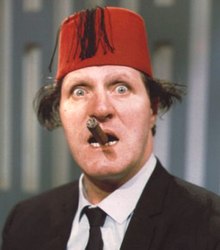 “We had an audience laughing on the front of ‘Sgt. Pepper,’” Paul relates in his 1997 book “Many Years From Now.” “It had always been one of my favorite moments; I’d listened to radio a lot as a kid, and there had always been a moment in a radio show, say with someone like Tommy Cooper, where he would walk on stage and he’d say hello, and they’d laugh, and he’d tell a joke, and they would laugh, and there would always be a moment in these things, because it was live radio, where he wouldn’t say anything, and the audience would laugh. And my imagination went wild whenever that happened. I thought, ‘What is it? Has he dropped his trousers? Did he do a funny look?’ I had to know what had made ‘em laugh. It fascinated me so much, and I’d always remembered that, so when we did ‘Pepper’ there’s one of those laughs for nothing in there, just where Billy Shears is being introduced they all just laugh, and you don’t know what the audience has laughed at.” Referring to them finding the right "laugh" to put into the master tape, Paul remembers: “We sat through hours of tapes, just giggling, it was just hilarious listening to an audience laugh. It was a great thing to do actually.” “We had an audience laughing on the front of ‘Sgt. Pepper,’” Paul relates in his 1997 book “Many Years From Now.” “It had always been one of my favorite moments; I’d listened to radio a lot as a kid, and there had always been a moment in a radio show, say with someone like Tommy Cooper, where he would walk on stage and he’d say hello, and they’d laugh, and he’d tell a joke, and they would laugh, and there would always be a moment in these things, because it was live radio, where he wouldn’t say anything, and the audience would laugh. And my imagination went wild whenever that happened. I thought, ‘What is it? Has he dropped his trousers? Did he do a funny look?’ I had to know what had made ‘em laugh. It fascinated me so much, and I’d always remembered that, so when we did ‘Pepper’ there’s one of those laughs for nothing in there, just where Billy Shears is being introduced they all just laugh, and you don’t know what the audience has laughed at.” Referring to them finding the right "laugh" to put into the master tape, Paul remembers: “We sat through hours of tapes, just giggling, it was just hilarious listening to an audience laugh. It was a great thing to do actually.”
 Both the official mono and stereo mixes contained on the released album were also created on this day by George Martin, engineer Geoff Emerick and 2nd engineer Richard Lush, no doubt being overseen by the band themselves. Two mono mixes were made on this day, the final undoubtedly being deemed the best. Both the official mono and stereo mixes contained on the released album were also created on this day by George Martin, engineer Geoff Emerick and 2nd engineer Richard Lush, no doubt being overseen by the band themselves. Two mono mixes were made on this day, the final undoubtedly being deemed the best.
 It took eight attempts, however, to achieve the best stereo mix of the song, resulting in McCartney’s lead guitar overdub in the final verse appearing noticeably quieter here than in the mono mix. The original rhythm track and Paul’s overdubbed bass guitar were centered in the mix, Paul’s lead vocal and lead guitar overdub were mixed entirely in the right channel, while the French horns and harmony vocals in the chorus of the song were mixed predominantly in the left channel. Oddly enough, the harmony vocals heard in the second bridge (“it’s wonderful to be here…”) begin panned entirely in the left channel but then gradually become centered in the mix by the conclusion of the section (“…we’d love to take you home”). By 2:15 am the next morning, everyone was satisfied and the song was considered complete. It took eight attempts, however, to achieve the best stereo mix of the song, resulting in McCartney’s lead guitar overdub in the final verse appearing noticeably quieter here than in the mono mix. The original rhythm track and Paul’s overdubbed bass guitar were centered in the mix, Paul’s lead vocal and lead guitar overdub were mixed entirely in the right channel, while the French horns and harmony vocals in the chorus of the song were mixed predominantly in the left channel. Oddly enough, the harmony vocals heard in the second bridge (“it’s wonderful to be here…”) begin panned entirely in the left channel but then gradually become centered in the mix by the conclusion of the section (“…we’d love to take you home”). By 2:15 am the next morning, everyone was satisfied and the song was considered complete.
 However, a segue needed to be created to cross-fade the song into the following track, namely “With A Little Help From My Friends.” The mono cross-fade was done on April 6th, 1967 in the EMI Studio Two control room by the same engineering staff while interjecting a bit of fans screaming from The Beatles live recordings at the Hollywood Bowl to mask the edit between the two songs. The stereo cross-fade was created the following day, April 7th, 1967, also in the control room of EMI Studio Two by the same EMI team. This time around, however, the screaming crowd comes in a little sooner and the segue between the two songs appears smoother. However, a segue needed to be created to cross-fade the song into the following track, namely “With A Little Help From My Friends.” The mono cross-fade was done on April 6th, 1967 in the EMI Studio Two control room by the same engineering staff while interjecting a bit of fans screaming from The Beatles live recordings at the Hollywood Bowl to mask the edit between the two songs. The stereo cross-fade was created the following day, April 7th, 1967, also in the control room of EMI Studio Two by the same EMI team. This time around, however, the screaming crowd comes in a little sooner and the segue between the two songs appears smoother.
 A further stereo mix was made of this song, but not until 1998. Because a new soundtrack to the Beatles' “Yellow Submarine” film, titled “Yellow Submarine Songtrack,” was being prepared in conjunction to the movie’s restoration and re-release, an Abbey Road engineering team was hired to create new stereo mixes of the songs in the movie. These engineers, namely Peter Cobbin, Paul Hicks, Mirek Stiles and Allan Rouse, went back to the original master tapes to create these mixes – this being a definite first for the four “Sgt. Pepper” tracks involved in this project. A further stereo mix was made of this song, but not until 1998. Because a new soundtrack to the Beatles' “Yellow Submarine” film, titled “Yellow Submarine Songtrack,” was being prepared in conjunction to the movie’s restoration and re-release, an Abbey Road engineering team was hired to create new stereo mixes of the songs in the movie. These engineers, namely Peter Cobbin, Paul Hicks, Mirek Stiles and Allan Rouse, went back to the original master tapes to create these mixes – this being a definite first for the four “Sgt. Pepper” tracks involved in this project.
 The stereo landscape on this new mix is substantially different than George Martin’s original 1967 stereo mix. The rhythm track, Paul’s overdubbed bass and all vocals are centered in the new mix while McCartney’s lead guitar is predominantly heard in the right channel. The French horns are panned mostly to the left channel except in the last two measures, or segue, where the horns are now explicitly in the right channel. The screaming crowd from their Hollywood Bowl concert is noticeably different, undoubtedly due to the engineers choosing a different segment of "screams" to use on this mix. Otherwise, the vocals and guitar work come across more vibrantly here. The stereo landscape on this new mix is substantially different than George Martin’s original 1967 stereo mix. The rhythm track, Paul’s overdubbed bass and all vocals are centered in the new mix while McCartney’s lead guitar is predominantly heard in the right channel. The French horns are panned mostly to the left channel except in the last two measures, or segue, where the horns are now explicitly in the right channel. The screaming crowd from their Hollywood Bowl concert is noticeably different, undoubtedly due to the engineers choosing a different segment of "screams" to use on this mix. Otherwise, the vocals and guitar work come across more vibrantly here.
 George Martin's son Giles Martin, along with engineer Sam Okell, returned to the original master tapes of the song sometime between 2016 and 2017 to create a new stereo mix of the song that follows the original mono mix as a template. This vibrant new stereo mix was made for inclusion in the 50th Anniversary Edition of the "Sgt. Pepper" album. While they were at it, this engineering team also created two additional mixes of the song to be included on various editions of this release, one being the original instrumental "take one" and the vocalized "take nine," as described above. George Martin's son Giles Martin, along with engineer Sam Okell, returned to the original master tapes of the song sometime between 2016 and 2017 to create a new stereo mix of the song that follows the original mono mix as a template. This vibrant new stereo mix was made for inclusion in the 50th Anniversary Edition of the "Sgt. Pepper" album. While they were at it, this engineering team also created two additional mixes of the song to be included on various editions of this release, one being the original instrumental "take one" and the vocalized "take nine," as described above.
 Paul McCartney also recorded a live version of the song on November 23rd, 1989 as released on both “Tripping The Live Fantastic” and “Tripping The Live Fantastic: Highlights!” Also, on July 2nd, 2005, a live rendition of the song by McCartney and the group U2 was recorded as the opening song to the Live 8 concert held at Hyde Park in London. The song was released for charity on iTunes. Paul McCartney also recorded a live version of the song on November 23rd, 1989 as released on both “Tripping The Live Fantastic” and “Tripping The Live Fantastic: Highlights!” Also, on July 2nd, 2005, a live rendition of the song by McCartney and the group U2 was recorded as the opening song to the Live 8 concert held at Hyde Park in London. The song was released for charity on iTunes.
Song Structure and Style
 Being that the purpose of this song was to act as an overture of sorts, which was quite a departure from anything the group had done before, the framework of the song is quite unique to their past (as well as future) catalog. The structure consists of ‘intro/ verse/ bridge/ chorus/ bridge/ verse/ outro’ (or abcdcbe). So, we witness here a forward progression from section to section until we get to the chorus, then reversing the order and going nearly all the way back to where we started. An instrumental section is included here also, comprising the first bridge. Being that the purpose of this song was to act as an overture of sorts, which was quite a departure from anything the group had done before, the framework of the song is quite unique to their past (as well as future) catalog. The structure consists of ‘intro/ verse/ bridge/ chorus/ bridge/ verse/ outro’ (or abcdcbe). So, we witness here a forward progression from section to section until we get to the chorus, then reversing the order and going nearly all the way back to where we started. An instrumental section is included here also, comprising the first bridge.
 The first eleven seconds of the song, however, are filled with an atmospheric display that puts the listener in the audience of a theatre just before a musical is about to begin. We can hear violinists in the orchestra pit tuning up as well as the anxious crowd mumbling in anticipation of the presentation which is soon to begin. The first-time listener of the album may very well be asking himself if this is a live album. The first eleven seconds of the song, however, are filled with an atmospheric display that puts the listener in the audience of a theatre just before a musical is about to begin. We can hear violinists in the orchestra pit tuning up as well as the anxious crowd mumbling in anticipation of the presentation which is soon to begin. The first-time listener of the album may very well be asking himself if this is a live album.
 As if without warning (not even a count-in), a blaring rock band begins the show with a four measure introduction. The violinists needn’t have been fully tuned up yet anyway since the listener doesn't hear any strings at all in this introductory song. The first sign of violins we hear is five songs later in “She’s Leaving Home” so they would probably all need to quietly re-tune their instruments again in preparation for this first appearance in the program fifteen minutes later. As if without warning (not even a count-in), a blaring rock band begins the show with a four measure introduction. The violinists needn’t have been fully tuned up yet anyway since the listener doesn't hear any strings at all in this introductory song. The first sign of violins we hear is five songs later in “She’s Leaving Home” so they would probably all need to quietly re-tune their instruments again in preparation for this first appearance in the program fifteen minutes later.
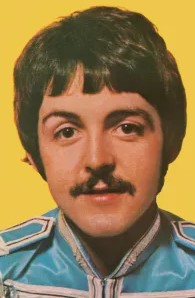 The raucous and heavily distorted introduction comprises the initial rhythm track along with Paul’s overdubbed bass and lead guitar pounding away, Ringo avoiding any cymbals whatsoever. We don’t fully have our footing yet, however, because the first two measures are not in the home key of G major. We don’t get there until the fourth measure. In typical Beatles fashion, the rhythm players take a "Beatles break" in the fourth measure which allows Ringo to perform a simple but syncopated drum fill with Paul getting a final last word on lead guitar just before the introduction concludes. The raucous and heavily distorted introduction comprises the initial rhythm track along with Paul’s overdubbed bass and lead guitar pounding away, Ringo avoiding any cymbals whatsoever. We don’t fully have our footing yet, however, because the first two measures are not in the home key of G major. We don’t get there until the fourth measure. In typical Beatles fashion, the rhythm players take a "Beatles break" in the fourth measure which allows Ringo to perform a simple but syncopated drum fill with Paul getting a final last word on lead guitar just before the introduction concludes.
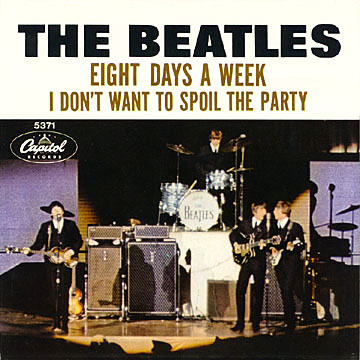 With the crowd quietly settled down in their seats, the first eight measure verse commences with Paul shouting out a brief history of the main characters of the musical. The full rock group enters back in again with Paul’s lead guitar part reduced to chord "chops" played on the two- and four-beat of each measure. The chord pattern used in the first four measures is quite reminiscent of their 1964 classic “Eight Days A Week” while Paul mimics John’s melodic songwriting style by staying primarily on one note while the chords change underneath it (see “Help!” as a good example of this). With the crowd quietly settled down in their seats, the first eight measure verse commences with Paul shouting out a brief history of the main characters of the musical. The full rock group enters back in again with Paul’s lead guitar part reduced to chord "chops" played on the two- and four-beat of each measure. The chord pattern used in the first four measures is quite reminiscent of their 1964 classic “Eight Days A Week” while Paul mimics John’s melodic songwriting style by staying primarily on one note while the chords change underneath it (see “Help!” as a good example of this).
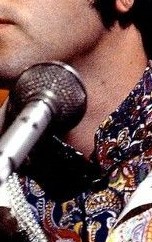 The final four measures of this verse display McCartney’s vocals slowly reaching up to higher registers with a bluesy touch in the sixth measure on the words “the act you’ve known for all these years,” turning the C major chord to a C7 in the process. Then, when Paul introduces the band, his lead guitar "chops" alter somewhat and the crowd applauds in response to the introduction. Ringo concludes the verse with a nearly identical syncopated drum fill as he played to end the introduction. The final four measures of this verse display McCartney’s vocals slowly reaching up to higher registers with a bluesy touch in the sixth measure on the words “the act you’ve known for all these years,” turning the C major chord to a C7 in the process. Then, when Paul introduces the band, his lead guitar "chops" alter somewhat and the crowd applauds in response to the introduction. Ringo concludes the verse with a nearly identical syncopated drum fill as he played to end the introduction.
 With the crowd still applauding, a five-measure instrumental bridge begins, the intricate score and its melody line being played by four French horn players. The audience apparently sees something humorous happen on the stage which causes a spontaneous burst of laughter. In a 2017 interview with engineer Geoff Emerick, he relates Paul's explanation of this laughter: "That's when, you know, Ringo comes on stage to sing 'Billy Shears' and he trips up and falls over. That's why the audience laughs." The rock band is appropriately subdued during the horn performance with only subtle traces of electric guitar coming through at times. One stray off-beat guitar note blares out in the fifth and final measure which unfortunately distracts us from the classy final flourish from the French horns. Damn rock musicians! With the crowd still applauding, a five-measure instrumental bridge begins, the intricate score and its melody line being played by four French horn players. The audience apparently sees something humorous happen on the stage which causes a spontaneous burst of laughter. In a 2017 interview with engineer Geoff Emerick, he relates Paul's explanation of this laughter: "That's when, you know, Ringo comes on stage to sing 'Billy Shears' and he trips up and falls over. That's why the audience laughs." The rock band is appropriately subdued during the horn performance with only subtle traces of electric guitar coming through at times. One stray off-beat guitar note blares out in the fifth and final measure which unfortunately distracts us from the classy final flourish from the French horns. Damn rock musicians!
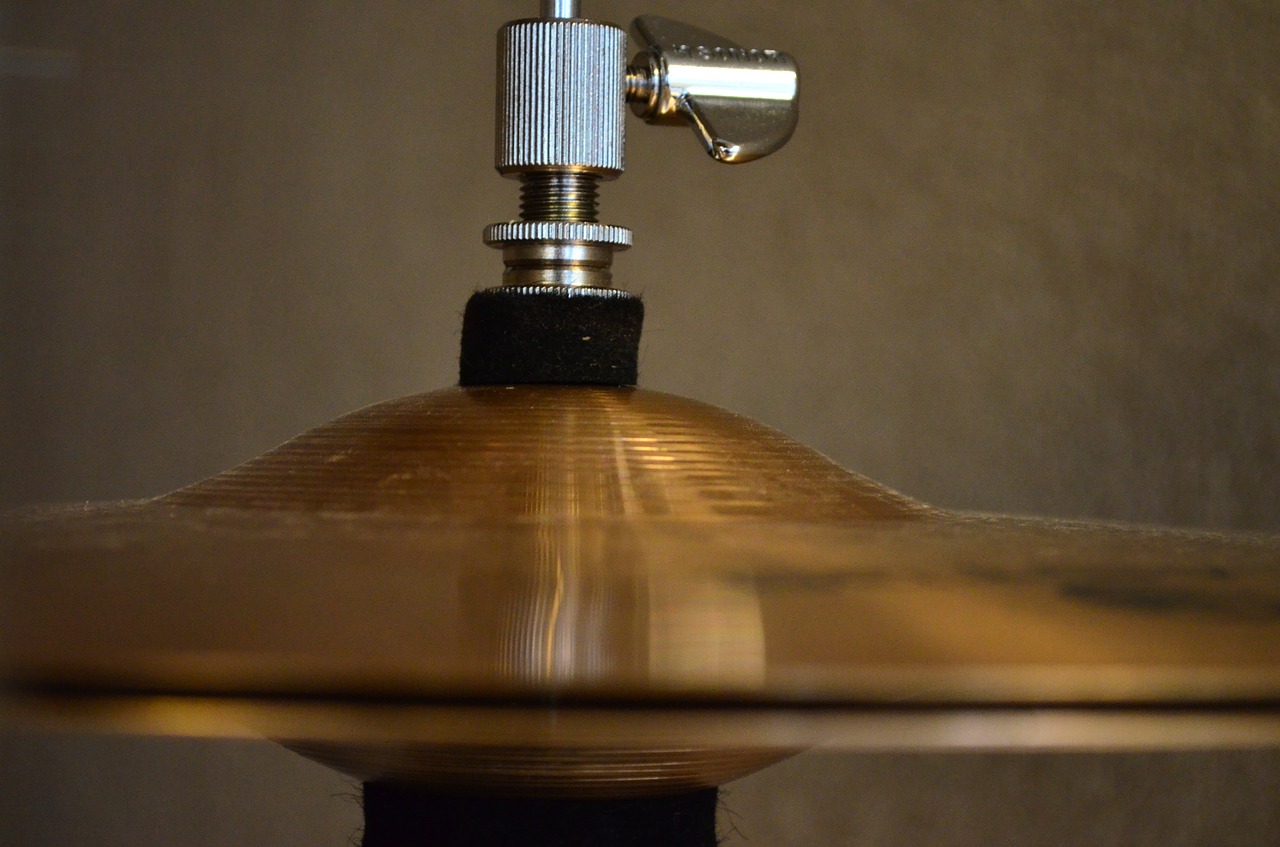 Finally, we arrive at the song's chorus, this being the focal point and climax of the proceedings. A six-voice group of harmonies (Lennon being the most prominent) identifies themselves as the “Sgt. Pepper” band, wishing that we all “enjoy the show.” Ringo flails away at his sizzling hi-hat for the first time as the heavy rock guitars fill our ears. The eighth measure has the band bow out to allow the French horns to play a four-note unison melody line. The ninth measure brings the rock band back in to round out the last four measures of the chorus as the vocalists re-emphasize their group name repeatedly. The final “hearts club band” is emphasized by syncopated bursts from the group, accentuated by two finishing snare/guitar blasts. Finally, we arrive at the song's chorus, this being the focal point and climax of the proceedings. A six-voice group of harmonies (Lennon being the most prominent) identifies themselves as the “Sgt. Pepper” band, wishing that we all “enjoy the show.” Ringo flails away at his sizzling hi-hat for the first time as the heavy rock guitars fill our ears. The eighth measure has the band bow out to allow the French horns to play a four-note unison melody line. The ninth measure brings the rock band back in to round out the last four measures of the chorus as the vocalists re-emphasize their group name repeatedly. The final “hearts club band” is emphasized by syncopated bursts from the group, accentuated by two finishing snare/guitar blasts.
 A repeat of the bridge is then heard, but this time it contains the harmonized lyrics “it’s wonderful to be here…” while the French horns play a backdrop of harmonized lines and the rock band is once again subdued, Ringo playing without cymbals. The fourth and fifth measures bring the bridge to a climax with an intricate French horn passage played against the silly assurance from the vocalists “we’d like to take you home with us.” This thought is appreciated by the audience, evidenced by their approving applause. A repeat of the bridge is then heard, but this time it contains the harmonized lyrics “it’s wonderful to be here…” while the French horns play a backdrop of harmonized lines and the rock band is once again subdued, Ringo playing without cymbals. The fourth and fifth measures bring the bridge to a climax with an intricate French horn passage played against the silly assurance from the vocalists “we’d like to take you home with us.” This thought is appreciated by the audience, evidenced by their approving applause.
 Instead of the bridge building us up to the chorus as last time, it brings us back to Paul as our Master Of Ceremonies for another verse. He needs to interrupt the fun to announce that “the singer’s going to sing a song” and the audience is called upon to “sing along.” This second eight-measure verse is identical in instrumentation to the first, right down to the swell of the audience’s applause in the final two measures, this time at the introduction of the lead singer’s name “Billy Shears.” Paul’s lead guitar overdub during the final recitation of the band’s name, however, appears to go a little haywire, but the crowd is excited anyway. Instead of the bridge building us up to the chorus as last time, it brings us back to Paul as our Master Of Ceremonies for another verse. He needs to interrupt the fun to announce that “the singer’s going to sing a song” and the audience is called upon to “sing along.” This second eight-measure verse is identical in instrumentation to the first, right down to the swell of the audience’s applause in the final two measures, this time at the introduction of the lead singer’s name “Billy Shears.” Paul’s lead guitar overdub during the final recitation of the band’s name, however, appears to go a little haywire, but the crowd is excited anyway.
 The song's conclusion then appears, which was created to segue into Billy’s song. However, during the recording, The Beatles didn’t have a song for him to sing yet. Therefore, the original master tapes reveal that they played twelve measures of vamping on the C chord, four two-measure sections that contain overdubbed French horn harmonized notes and Paul’s descending bass lines, and four extra measures of meandering guitar/drum/bass work that they all knew would never be heard. They decided, eventually, to limit this to the first two measure section only and edit it to the new recording of “With A Little Help From My Friends” with another segue that brought the key from C major to E major – the key that Ringo was comfortable singing in. In order to mask the edit, we hear the teenage fans scream in ecstasy at the appearance of their idol Billy Shears. The song's conclusion then appears, which was created to segue into Billy’s song. However, during the recording, The Beatles didn’t have a song for him to sing yet. Therefore, the original master tapes reveal that they played twelve measures of vamping on the C chord, four two-measure sections that contain overdubbed French horn harmonized notes and Paul’s descending bass lines, and four extra measures of meandering guitar/drum/bass work that they all knew would never be heard. They decided, eventually, to limit this to the first two measure section only and edit it to the new recording of “With A Little Help From My Friends” with another segue that brought the key from C major to E major – the key that Ringo was comfortable singing in. In order to mask the edit, we hear the teenage fans scream in ecstasy at the appearance of their idol Billy Shears.
 Paul McCartney is definitely the ring leader of this song, playing three instruments (lead, rhythm and bass guitar), singing lead, and no doubt playing a predominant role in the arrangement. Paul sings convincingly and confidently at the top of his register, putting in a vocal performance worthy of admiration. Since his bass parts are now being recorded on separate tracks as overdubs, their prominence in the finished product is worthy of their intricacy. Paul McCartney is definitely the ring leader of this song, playing three instruments (lead, rhythm and bass guitar), singing lead, and no doubt playing a predominant role in the arrangement. Paul sings convincingly and confidently at the top of his register, putting in a vocal performance worthy of admiration. Since his bass parts are now being recorded on separate tracks as overdubs, their prominence in the finished product is worthy of their intricacy.
 Both John and George play minimal roles on the song, John appearing only as harmony vocalist with George, the latter displaying a slightly discernible rhythm guitar part in the rhythm track. Ringo, however, vibrantly delivers the rhythm while throwing in the occasional accent and drum fill. Both John and George play minimal roles on the song, John appearing only as harmony vocalist with George, the latter displaying a slightly discernible rhythm guitar part in the rhythm track. Ringo, however, vibrantly delivers the rhythm while throwing in the occasional accent and drum fill.
The lyrical concept of this song appears to be that “twenty years ago” a Brass band leader with the name “Sgt. Pepper” formed a band that had become very popular (“known for all these years”). Music tastes may have changed since then (“going in and out of style”), but this production is now introducing his protégés as a combination of brass band/rock band. Although much time has gone by, this new combination is “guaranteed to raise a smile.” One reason that their success is guaranteed is that it features the current pop idol “Billy Shears” as featured vocalist. Therefore, all generations will indeed “enjoy the show,” the teenyboppers will swoon over Billy while the purists will “sit back and let the evening go.”
American Releases
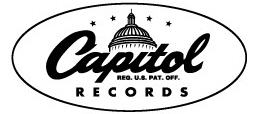 June 2nd, 1967 was the official American release date of the “Sgt. Pepper’s Lonely Hearts Club Band” album, which has been reissued on vinyl many times throughout the years. Even though Capitol was in the process of phasing out mono album releases, they still printed a small amount of this album in mono in 1967, making a US vinyl copy in this configuration quite rare. June 2nd, 1967 was the official American release date of the “Sgt. Pepper’s Lonely Hearts Club Band” album, which has been reissued on vinyl many times throughout the years. Even though Capitol was in the process of phasing out mono album releases, they still printed a small amount of this album in mono in 1967, making a US vinyl copy in this configuration quite rare.
 Sometime during 1967, Capitol released Beatles music on the brand new but short-lived format "Playtapes." These tape cartridges did not have the capability to include entire albums, so a mini version of the "Sgt. Pepper" album was released in this portable format, the title track being one of the four songs on this release. These "Playtapes" are highly collectable today. Sometime during 1967, Capitol released Beatles music on the brand new but short-lived format "Playtapes." These tape cartridges did not have the capability to include entire albums, so a mini version of the "Sgt. Pepper" album was released in this portable format, the title track being one of the four songs on this release. These "Playtapes" are highly collectable today.
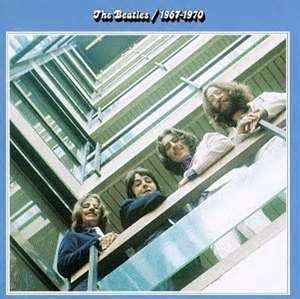 On April 2nd, 1973, the second of a pair of new compilation albums was released in America, namely “The Beatles / 1967-1970” (“The Blue Album”) Side One of the album proudly boasted the song “Sgt. Pepper’s Lonely Hearts Club Band” as one of four songs representing the classic 1967 album. It quickly topped the Billboard album charts shortly thereafter. It was first released on compact disc on September 20th, 1993 and then was re-released as a remastered set on August 10th, 2010. On April 2nd, 1973, the second of a pair of new compilation albums was released in America, namely “The Beatles / 1967-1970” (“The Blue Album”) Side One of the album proudly boasted the song “Sgt. Pepper’s Lonely Hearts Club Band” as one of four songs representing the classic 1967 album. It quickly topped the Billboard album charts shortly thereafter. It was first released on compact disc on September 20th, 1993 and then was re-released as a remastered set on August 10th, 2010.
 On August 14th, 1978, continuing on the successful resurgence of “Beatlemania” on the charts, Capitol tried its hand at releasing the Sgt. Pepper theme and “With A Little Help From My Friends” as the a-side of a single with “A Day In The Life” as the b-side. The strategy somewhat backfired as the single failed to make the top 40, peaking at #71. Since this single was also released in the UK in September of 1978 (peaking at #63), it was included in the vinyl box set "The Beatles Singles Collection" that was released worldwide on December 6th, 1982. This single was dropped, however, when the box set was reissued in 1992 and 2019. On August 14th, 1978, continuing on the successful resurgence of “Beatlemania” on the charts, Capitol tried its hand at releasing the Sgt. Pepper theme and “With A Little Help From My Friends” as the a-side of a single with “A Day In The Life” as the b-side. The strategy somewhat backfired as the single failed to make the top 40, peaking at #71. Since this single was also released in the UK in September of 1978 (peaking at #63), it was included in the vinyl box set "The Beatles Singles Collection" that was released worldwide on December 6th, 1982. This single was dropped, however, when the box set was reissued in 1992 and 2019.
 The single above was released simultaneously (August 14th, 1978) with the US pressing of the picture disc of the “Sgt. Pepper” album, which was a limited edition release that has become quite a collectors’ item as the years progressed. Then, on December 15th, 2017, it was released in this form yet again with the new Giles Martin stereo mix on 180 Gram vinyl, this also being a limited edition release. The single above was released simultaneously (August 14th, 1978) with the US pressing of the picture disc of the “Sgt. Pepper” album, which was a limited edition release that has become quite a collectors’ item as the years progressed. Then, on December 15th, 2017, it was released in this form yet again with the new Giles Martin stereo mix on 180 Gram vinyl, this also being a limited edition release.
 Two very interesting US vinyl reissues of the "Sgt. Pepper" album were released as "Original Master Recording" editions that were made available by Mobile Fidelity Sound Lab. The first edition was released in September of 1982 (matrix # UHQR "Ultra High Quality Recording" 1-100) and was listed for $40 per copy, more than five times of the standard version, and was limited to 5000 sequentially numbered copies that weighed 200 grams (double the weight of conventional vinyl at that time) and were packaged between layers of protective foam rubber in a thick box. The second edition from Mobile Fidelity Sound Lab was released in June of 1983 similar to the rest of the Beatles catalog released within their series. Both of these were prepared utilizing half-speed mastering technology from the original master tape on loan from EMI. These versions of "Sgt. Pepper" were only available for a short time and are quite collectible today. Two very interesting US vinyl reissues of the "Sgt. Pepper" album were released as "Original Master Recording" editions that were made available by Mobile Fidelity Sound Lab. The first edition was released in September of 1982 (matrix # UHQR "Ultra High Quality Recording" 1-100) and was listed for $40 per copy, more than five times of the standard version, and was limited to 5000 sequentially numbered copies that weighed 200 grams (double the weight of conventional vinyl at that time) and were packaged between layers of protective foam rubber in a thick box. The second edition from Mobile Fidelity Sound Lab was released in June of 1983 similar to the rest of the Beatles catalog released within their series. Both of these were prepared utilizing half-speed mastering technology from the original master tape on loan from EMI. These versions of "Sgt. Pepper" were only available for a short time and are quite collectible today.
 On September 21st, 1987, just over twenty years after its initial release (as in “twenty years ago today”), the Sgt. Pepper album was first released on compact disc. It was the only Beatles CD released at that time to have extensive liner notes. Also in place for the first time in the US was the high pitched dog whistle and the “inner groove” that didn't appear on the original vinyl release in the states. This CD was then remastered and re-released on September 9th, 2009 with even more extensive liner notes. On September 21st, 1987, just over twenty years after its initial release (as in “twenty years ago today”), the Sgt. Pepper album was first released on compact disc. It was the only Beatles CD released at that time to have extensive liner notes. Also in place for the first time in the US was the high pitched dog whistle and the “inner groove” that didn't appear on the original vinyl release in the states. This CD was then remastered and re-released on September 9th, 2009 with even more extensive liner notes.
 In January of 1994, the 1978 single was then re-released by Capitol on their Cema “For Jukeboxes Only” series, this time on clear vinyl, which is quite the find today. In January of 1994, the 1978 single was then re-released by Capitol on their Cema “For Jukeboxes Only” series, this time on clear vinyl, which is quite the find today.
The 1998 newly mixed version of the song was included on the new release “Yellow Submarine Songtrack” due to its inclusion in the 1968 animated movie. This album, which was released on September 13th, 1999, did well in the US, peaking at #15 on the Billboard album charts.
 Then, on September 9th, 2009, the remastered mono mix of the song appeared in the CD box set “The Beatles in Mono” (the vinyl edition being released on September 9th, 2014) which allows Beatles enthusiasts all over the world to experience the entire “Sgt. Pepper” LP as The Beatles originally intended (and as suggested by George Martin) – in mono! Then, on September 9th, 2009, the remastered mono mix of the song appeared in the CD box set “The Beatles in Mono” (the vinyl edition being released on September 9th, 2014) which allows Beatles enthusiasts all over the world to experience the entire “Sgt. Pepper” LP as The Beatles originally intended (and as suggested by George Martin) – in mono!
The newly mixed stereo version of the album came out on May 26th, 2017 that was based on the superior mono mix of 1967. A new vibrant mix of the "Sgt. Pepper" theme is included in all editions of this re-release. The original "take nine" of the song was included as a bonus track on the "2 CD Anniversay Edition" of the album, while that and the instrumental "take one" are included in the "Super Deluxe Edition" box set.
 A new 50th Anniversay edition of the compilation album "The Beatles / 1967 - 1970" ("The Blue Album") was released on November 10th, 2023, the newly created Giles Martin mix of the song "Sgt Pepper's Lonely Hearts Club Band" being included here. This expanded release included 12 additional songs for a total of 38 tracks, and was made available as a double CD and as a triple vinyl release on both black and blue vinyl. A new 50th Anniversay edition of the compilation album "The Beatles / 1967 - 1970" ("The Blue Album") was released on November 10th, 2023, the newly created Giles Martin mix of the song "Sgt Pepper's Lonely Hearts Club Band" being included here. This expanded release included 12 additional songs for a total of 38 tracks, and was made available as a double CD and as a triple vinyl release on both black and blue vinyl.
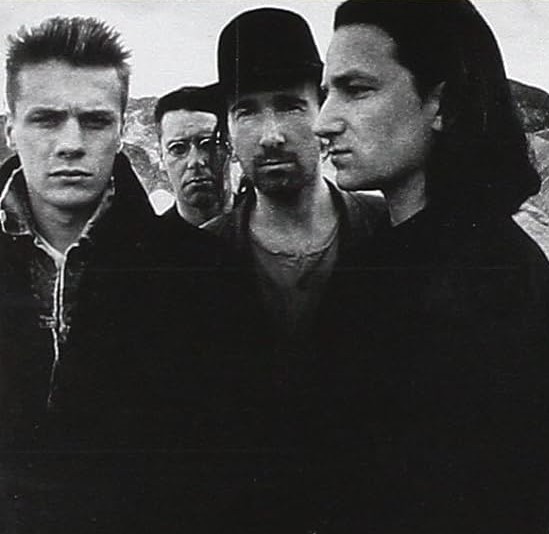 Paul McCartney released various live versions of the “Sgt. Pepper” theme, the first being on the November 5th, 1990 released double album “Tripping The Live Fantastic,” and the second being the same performance on the November 12th, 1990 released single album “Tripping The Live Fantastic, Highlights!” Then, on iTunes only, his version of the song as performed with U2 as the opening song for the charity event Live 8 was released in 2005, proceeds going to charity. Paul McCartney released various live versions of the “Sgt. Pepper” theme, the first being on the November 5th, 1990 released double album “Tripping The Live Fantastic,” and the second being the same performance on the November 12th, 1990 released single album “Tripping The Live Fantastic, Highlights!” Then, on iTunes only, his version of the song as performed with U2 as the opening song for the charity event Live 8 was released in 2005, proceeds going to charity.
Live Performances
 1967 may have been past the touring life of The Beatles, but “Sgt. Pepper” did get performed live by Paul, George, Ringo and Eric Clapton at Eric’s wedding reception (with George’s ex Pattie Boyd) on May 19th, 1979. McCartney didn’t hesitate to put this landmark song to good use during his post-Beatles touring days as well. His first solo “World Tour,” which ran from September 26th, 1989 in Norway to July 29th, 1990 in Chicago, included the song in medley with “Sgt. Pepper Reprise” from the original album. Also, his brief “Unplugged 1991 Summer Tour,” running from May 8th (Barcelona, Spain) to July 24th (Copenhagen, Denmark), featured the track as the closing number of each show. 1967 may have been past the touring life of The Beatles, but “Sgt. Pepper” did get performed live by Paul, George, Ringo and Eric Clapton at Eric’s wedding reception (with George’s ex Pattie Boyd) on May 19th, 1979. McCartney didn’t hesitate to put this landmark song to good use during his post-Beatles touring days as well. His first solo “World Tour,” which ran from September 26th, 1989 in Norway to July 29th, 1990 in Chicago, included the song in medley with “Sgt. Pepper Reprise” from the original album. Also, his brief “Unplugged 1991 Summer Tour,” running from May 8th (Barcelona, Spain) to July 24th (Copenhagen, Denmark), featured the track as the closing number of each show.
 Next, Paul's “New World Tour” included the song, this tour beginning on February 18th (Milan, Italy) and concluding on December 16th (Santiago, Chile) of 1993. For the next number of tours he omitted playing the song, opting instead to concluding his shows with a medley of “Sgt. Pepper Reprise” and “The End” from the "Abbey Road" album. However, on July 2nd, 2005, Paul performed “Sgt. Pepper” as the opening song of the London Live 8 show with U2, Bono singing lead on the bridge (“It’s wonderful to be here…”). Next, Paul's “New World Tour” included the song, this tour beginning on February 18th (Milan, Italy) and concluding on December 16th (Santiago, Chile) of 1993. For the next number of tours he omitted playing the song, opting instead to concluding his shows with a medley of “Sgt. Pepper Reprise” and “The End” from the "Abbey Road" album. However, on July 2nd, 2005, Paul performed “Sgt. Pepper” as the opening song of the London Live 8 show with U2, Bono singing lead on the bridge (“It’s wonderful to be here…”).
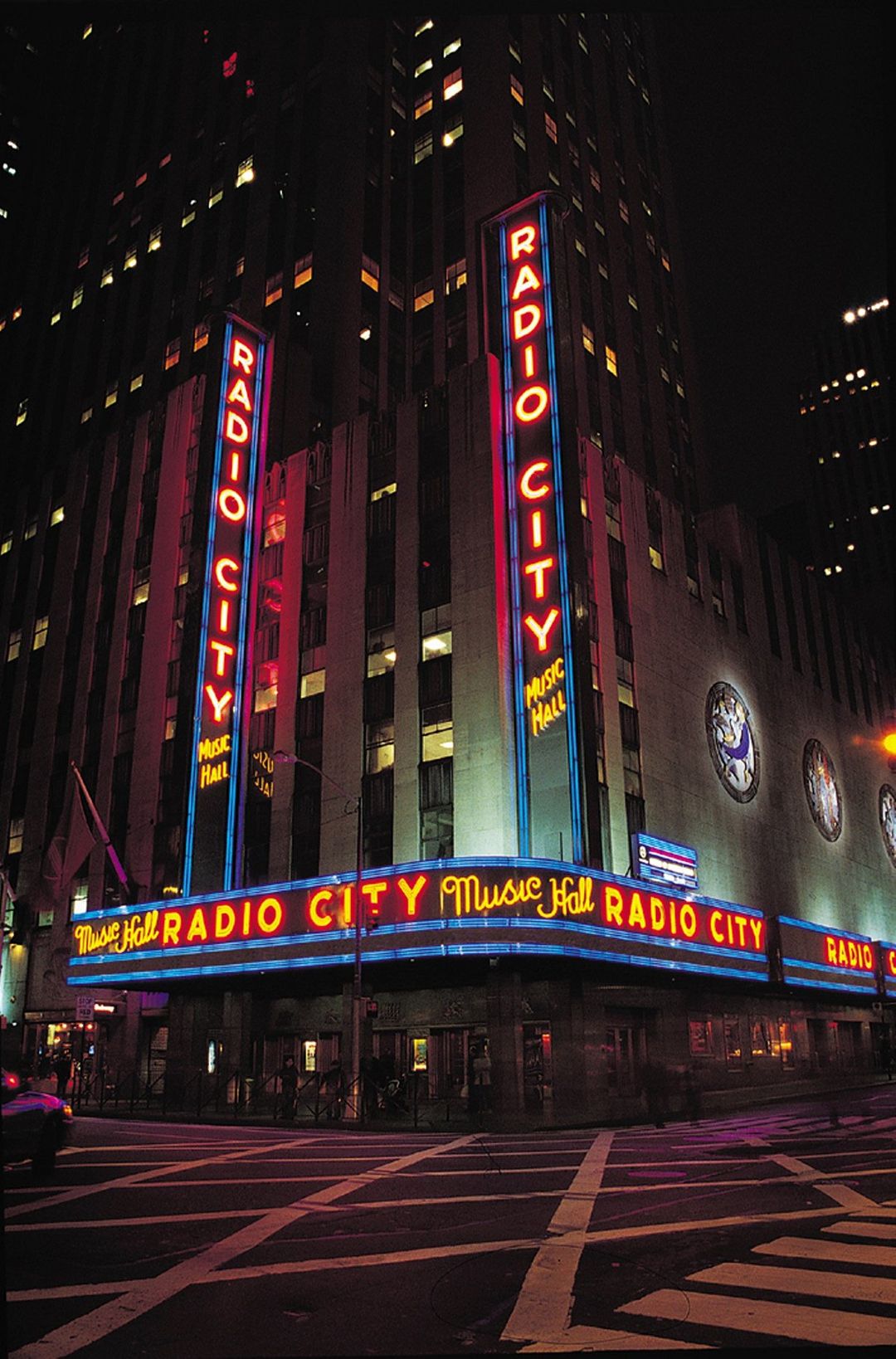 Paul also played the song at a benefit at the Radio City Music Hall on April 4th, 2009, segueing it into “With A Little Help From My Friends” which was sung by Ringo. Then, on January 27th, 2014, Paul and his band performed the song once again at the Los Angeles Convention Center for the 50th Anniversary of The Beatles appearance on The Ed Sullivan Show, which was aired on CBS on February 9th of that year. This acted as an introduction for Ringo to run out on stage to perform "With A Little Help From My Friends." Paul also played the song at a benefit at the Radio City Music Hall on April 4th, 2009, segueing it into “With A Little Help From My Friends” which was sung by Ringo. Then, on January 27th, 2014, Paul and his band performed the song once again at the Los Angeles Convention Center for the 50th Anniversary of The Beatles appearance on The Ed Sullivan Show, which was aired on CBS on February 9th of that year. This acted as an introduction for Ringo to run out on stage to perform "With A Little Help From My Friends."
Conclusion
 Such was the impact of this startling song that Jimi Hendrix, a favorite of The Beatles, performed his own unique version of the “Sgt. Pepper” theme live at the Saville Theatre in London on June 4th, 1967 - only three days after the album was released in Britain. Paul (with Jane Asher) and George (with Pattie Boyd) were attendees in the audience of that Brian Epstein-owned Theatre that evening. Such was the impact of this startling song that Jimi Hendrix, a favorite of The Beatles, performed his own unique version of the “Sgt. Pepper” theme live at the Saville Theatre in London on June 4th, 1967 - only three days after the album was released in Britain. Paul (with Jane Asher) and George (with Pattie Boyd) were attendees in the audience of that Brian Epstein-owned Theatre that evening.
 “The biggest single tribute for me was that ‘Sgt. Pepper’ was released on the Thursday,” recalls Paul, “and, on the Sunday, we went to the Saville Theatre and Jimi Hendrix opened up with ‘Sgt. Pepper’ and he’d only had since Thursday to learn it. That was like the ultimate compliment. It’s still obviously a shining memory for me, because I admired him so much anyway, he was so accomplished. I put that down as one of the great honors of my career.” “The biggest single tribute for me was that ‘Sgt. Pepper’ was released on the Thursday,” recalls Paul, “and, on the Sunday, we went to the Saville Theatre and Jimi Hendrix opened up with ‘Sgt. Pepper’ and he’d only had since Thursday to learn it. That was like the ultimate compliment. It’s still obviously a shining memory for me, because I admired him so much anyway, he was so accomplished. I put that down as one of the great honors of my career.”
 While many fans quickly dismiss the song “Sgt. Pepper’s Lonely Hearts Club Band” as just a gimmicky introduction to a landmark album, closer examination (as we’ve done here) reveals how convincingly imaginative The Beatles' songwriting had become. As Chris Ingham writes in “The Rough Guide To The Beatles,” the track has “the color and confidence of a Fourth Of July parade and raises the curtain on the dizzying album to which it gives its name with genuine panache.” Perfectly stated! While many fans quickly dismiss the song “Sgt. Pepper’s Lonely Hearts Club Band” as just a gimmicky introduction to a landmark album, closer examination (as we’ve done here) reveals how convincingly imaginative The Beatles' songwriting had become. As Chris Ingham writes in “The Rough Guide To The Beatles,” the track has “the color and confidence of a Fourth Of July parade and raises the curtain on the dizzying album to which it gives its name with genuine panache.” Perfectly stated!
Song Summary
“Sgt. Pepper’s Lonely Hearts Club Band”
Written by: John Lennon / Paul McCartney
-
Song Written: November 19, 1966 – January, 1967
-
Song Recorded: February 1 & 2, March 3 & 6, April 6 & 7, 1967
-
First US Release Date: June 2, 1967
-
-
US Single Release: Capitol #4612
-
Highest Chart Position: #71
-
-
Length: 1:59
-
Key: G major
-
Producer: George Martin
-
Engineers: Geoff Emerick, Richard Lush
Instrumentation (most likely):
-
Paul McCartney - Lead and Harmony Vocals, Lead and Rhythm Guitar (1964 Fender Esquire), Bass Guitar (1964 Rickenbacker 4001S)
-
George Harrison – Rhythm Guitar (1961 Sonic Blue Fender Stratocaster), Harmony Vocals
-
Ringo Starr – Drums (1964 Ludwig Super Classic Black Oyster Pearl), Backing Vocals
-
John Lennon - Harmony Vocals
-
James W. Buck - French Horn
-
Neil Sanders - French Horn
-
Tony Randall - French Horn
-
John Burden - French Horn
-
Mal Evans - Backing Vocals
-
Neil Aspinall - Backing Vocals
Written and compiled by Dave Rybaczewski
|
IF YOU WOULD LIKE TO MAKE A DONATION TO KEEP THIS WEBSITE UP AND RUNNING, PLEASE CLICK BELOW!
Sign Up Below for our MONTHLY BEATLES TRIVIA QUIZ!
|